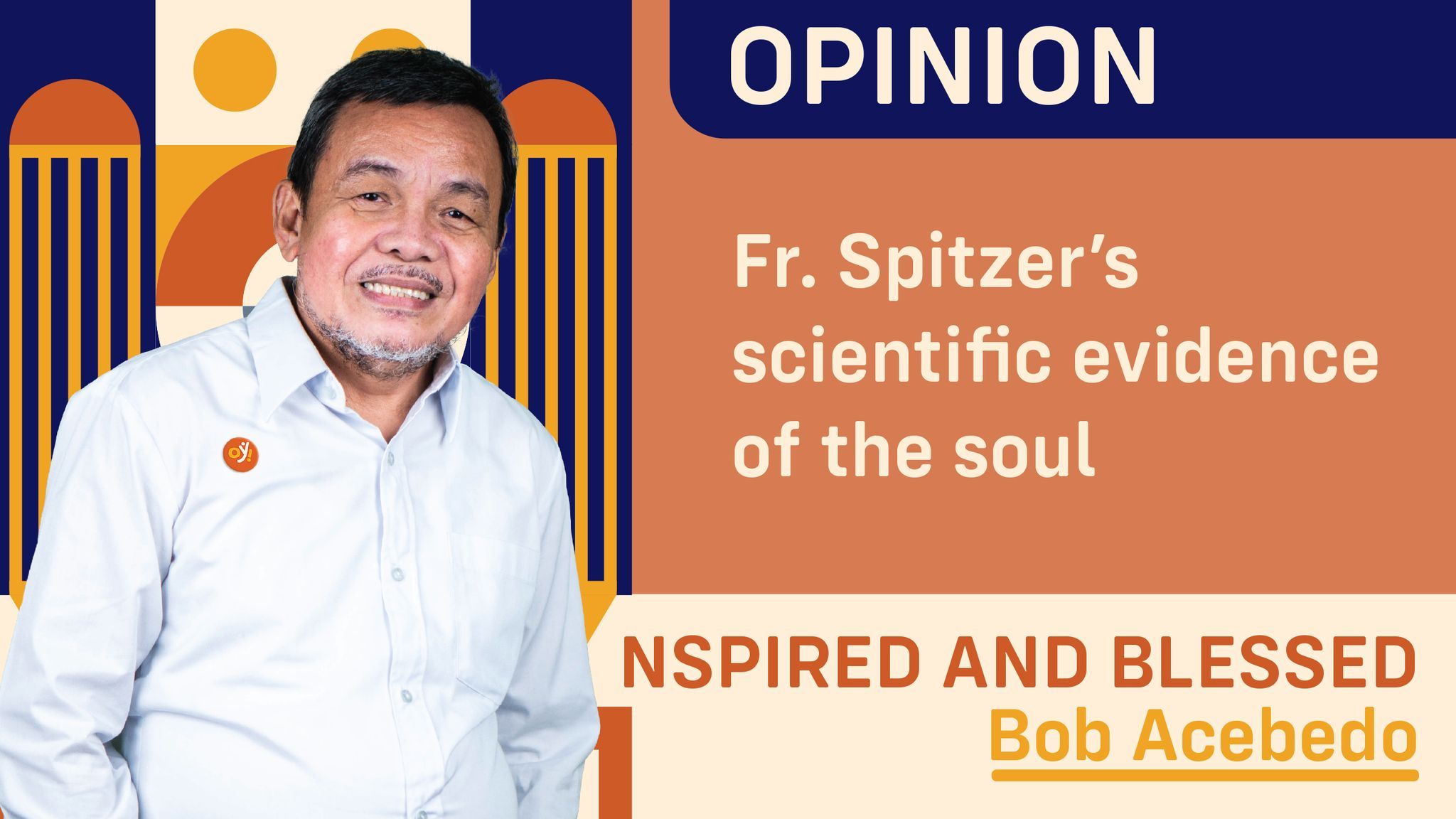Fr. Robert Spitzer is a Jesuit priest, philosopher, educator, author of 12 books, retired president of Gonzaga University (Washington), and founder and current president of Magis Center of Reason and Faith, a non-profit organization dedicated to developing educational materials on the complementarity of science, philosophy, and faith.
While, on my part, I have long learned about the rational basis or arguments for the existence of the soul from my past study of philosophy (and theology as well), for this piece I’d like to provide the scientific plausibility of the existence of the soul according to Fr. Spitzer, as culled from peer-reviewed scientific or medical studies.
From the scientific perspective, Fr. Spitzer tries to argue that the human soul empirically exists based on the multitude of scientific or medical studies about near-death experiences (NDEs).
According to Fr. Spitzer, there’s no dearth of scholarly peer-reviewed scientific studies implying the soul’s existence in near-death experiences: Samuel Parney, Southampton University, Journal of Resuscitation; Dr. Pin van Lommel, The Lancet Medical Journal; Bruce Greyson, University of Virginia Medical School; Dr. Stuart Hameroff and Sir Roger Penrose, Quantum Theory of Consciousness, Oxford University; Dr. Raymond Moody, Life after Life; and many more.
From all these studies of near-death experience, the common accounts of what people go through are:
1. They actually exit their physical body, rise up, and they can see from above the scene of the resuscitation; they can see their own bodies lying down.
2. They are conscious or aware of what is going on and of what the doctors and nurses are thinking; they want to communicate with the doctors or nurses (“hey, I’m not dead”) but they cannot.
3. They go through a tunnel or a passageway of some sort.
4. The come out on the other side into an incredibly brilliant and warm, and comforting light – in which they experience pure love.
5. They are greeted or assisted by the spirits of their loved ones, who appear to be “timeless” or “ageless.”
6. In the presence of an enlightened being of “complete compassion, love, and light,” they are afforded a panoramic review of their life.
While such experiences may be adjudged as merely anecdotal by some scientists, Fr. Spitzer points out that the enormity of radical data in these vast studies cannot simply be ignored.
“What is fundamental in these near-death experiences is the survival of consciousness after bodily death, along with emotion, self-awareness, and memory, which points out the existence of the human soul,” Fr. Spitzer said.
What is radically intriguing for Fr. Spitzer is that, from these near-death studies, even people who have been blind throughout their entire life can impressively give accurate account of their immediate surroundings during their near-death episode.
“This was demonstrated by the Kenneth Ring studies (Near-Death and Out-of-Body Experiences in the Blind: A Study of Apparent Eyeless Vision, Kenneth Ring, Ph. D.) wherein 81 percent of people who were blind from birth are seeing for the very first time when they’re clinically dead…How in the world can they give accurate vertical data of an entire scene that is going on?
“Like in the case of Bradley Burroughs, 16 years old, and blind from birth. In his near-death account, he says he zoomed right outside of the hospital walls, and there he was standing outside in the snow. He didn’t feel anything but he could see the tracks of the train in the snow. Then just about a minute later, the train comes by and it’s got a big huge sign on the track with an arrow pointing to the right. Then the train went down those tracks and went off into the grove of trees. He’s describing this perfectly. Of course, you can coordinate the train schedule with the time of Bradley’s clinical death, and it was 100 percent accurate. How on earth did the blind kid do it? By hallucination? No, he didn’t hallucinate, because hallucinations are notoriously inaccurate,” Fr. Spitzer explained.
Hurray, Fr. Spitzer! ‘Twas Bradley’s soul, no doubt.
#InspiredAndBlessed #BobAcebedo #FrRobertSpitzer #ScientificEvidenceOfTheSoul #Soul #OpinYonColumn #OpinYon #WeTakeAStand
